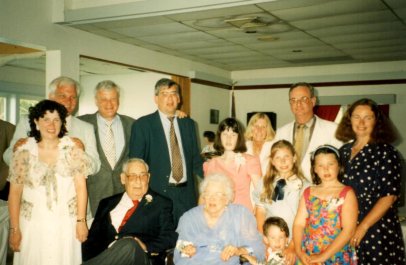

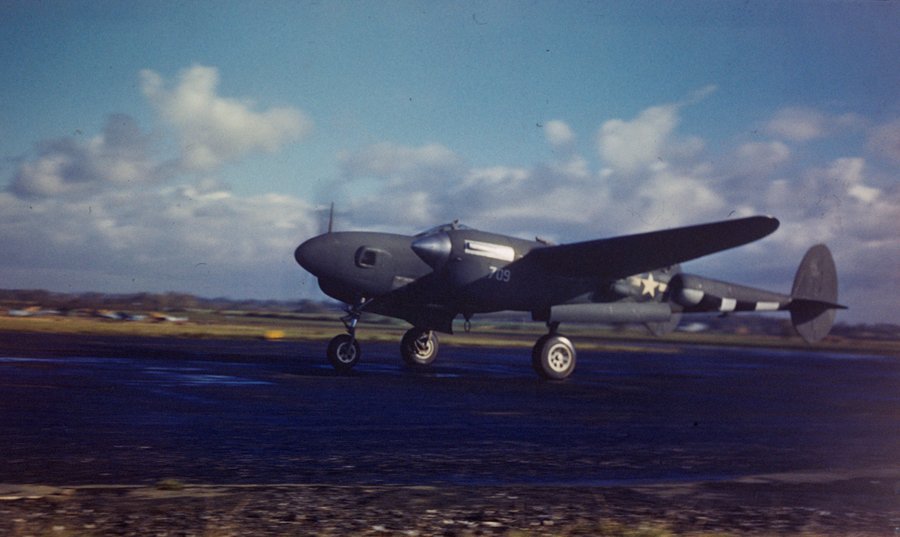
Eerbetoon Geallieerde Vliegeniers Lingewaal
Allied Airmen Tribute Lingewaal
Asperen-Herwijnen-Heukelum-Spijk-Vuren
Heukelum-Vuren 20-04-1945
Richard Edward (Dick) Brown
Richard Edward (Dick) Brown is born on 21 October 1923 in Swarthmore, Pennsylvania in the United States of America. His parents are Paul and Blanch Brown. His father fought in the trenches of northern France during World War 1. During a German attack he was exposed to mustard gas causing problems with his voice for the rest of his life. Dick attends Swarthmore High School and graduates in 1941.
From the 1941 Swarthmore High School yearbook
He then goes to the Dickinson college in Carlisle till 12 December 1942 when he joins the US Army Air Corps. His brother James serves with the 1st Marine corps and is awarded the Bronze Star for rescuing wounded comrades.
Richard ( Dick ) Brown 2nd left. Training in California, in the background a Texan T-6 trainer.
In England
In the course of 1944 he is transferred to the 8th Air Force in England and joins the 22nd Photographic reconnaissance squadron based at Mount Farm just north of Dorchester in Oxfordshire, England. The squadron is transferred to Chalgrove airbase from where Lt. Brown will fly his first mission in November 1944. His squadron flies the P-38 F-5E which is only armed with High Definition cameras capable of taking photos at high altitude.
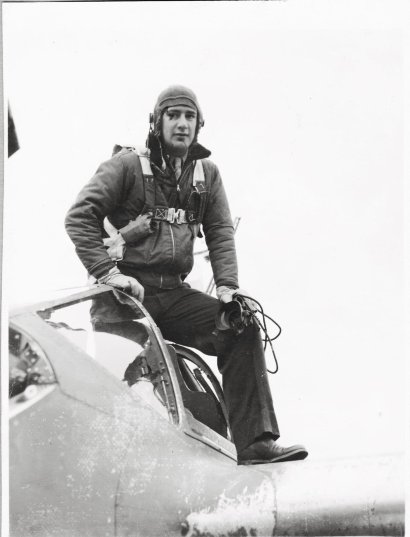
Lt. Brown getting out of his plane after his first mission in november 1944
Mission to Berlin 20-04-1945
On 20 April 1945 Lt. Brown, escorted by three P-51 fighters, flies a mission which will take him deep into Germany. This mission, on Adolf Hitler’s birthday, takes him to Berlin where he will photograph marshalling yards and probably positions of the Russians who have now encircled the nearly destroyed city of Berlin. After successfully carrying out the mission the four planes head back to base. The route takes them over the Rhine estuary in the Netherlands. The men think they fly over liberated territory and decide to fly to a low altitude allowing them to have a closer look of the Netherlands..
Removing the film from a just returned P-51 F-5E.
Hit!
Lt. Brown descends to an altitude of 200 feet with one P-51 at 500 feet on his right, another 1000 feet behind and 1000 above, and pilot John Gauss was on the left, 500 feet away and about 1000 above. Unaware that they flew over German occupied territory they crossed Holland and at one point saw a single man standing alone in a field. At first they thought he was leaning on a hoe perhaps doing farm work of some type; they were so low that they could see the buttons on his coat. Going past they realized he had a rifle and was shooting at the P-38 of Lt. Brown. The pilots joked about how he could have thought he could do any damage to the plane with a rifle, but shortly after John Gauss saw coolant coming from Lt. Brown’s plane, and the engine was on fire. John Gauss thought Lt. Brown should go up a couple of thousand feet and parachute, but the other wing man thought he should put the plane down there since there was not much time. The pilots in the escort planes saw the P-38 go down and Lt. Brown getting out near the village of Heukelum in the Netherlands. The radio was still working, and Lt. Brown told them he was okay and to go home. They did not mention in the after action reports that they had been flying at 200 feet when the plane went down because it was against regulations to be that low.
John Gauss's report of the events on 20 April 1945.
Created by Peter den Tek - 2016
Pilot John Gauss in his plane. In November 2015 the now 93 year old is traced down. He speaks to the sons of Lt. Brown after which the story emerges of the German soldier shooting down the plane of Lt. Brown.
The landing
Locals see how the P-38 approaches from the Asperen direction in the east. One of the engines is on fire. As the plane approaches Heukelum it makes an emergency landing 2 miles south of Heukelum. A young local boy Cees de Ridder sees the plane and goes to the location the plane came to a stop. He sees how the pilot has left the cockpit and is now standing next to his plane. He is calm and smokes a cigarette. German soldiers quickly arrive on bike from Asperen but they are far from calm. When they arrive they see that a large ditch is in their way and they are forced to cross the ditch leaving the bikes on the other side. Covered in mud they arrive at the location and capture Lt. Brown who is calmly waiting for them. Lt. Brown is place on a bike and cycles between two German soldiers to Asperen.
To the Island of Terschelling
As the only part of the Netherlands still occupied by the Germans is the west Lt. Brown is taken to the coastal town of Den Helder in north of the province of North-Holland. There he is incarcerated in a 19th century fort together with several other Allied airmen. The conditions in the fort are nog very good and the highest in rank of the group of 15 Allied prisoners, Polish officer Jan Zumbach, discusses a transfer to a better location with their German guards. Realising the war is at its end the Germans agree and they are taken by boat to the Island of Terschelling where they are placed in Hotel Oepkes. They are allowed to walk freely on the island till 21:00 hours.
The 16 prisoners of Terschelling. Lt. Brown is indicated by the red arrow.
The end of the war
On 5 May 1945 German commander Blaskowitz signs the surrender of all German forces in the Netherlands. The next day the 16 Allied airmen show themselves to the people of Terschelling on the balcony of hotel Oepkes. They are taken back to the mainland and later brought by plane to England.
6 mei 1945. The 16 former prisoners on the balcony of Hotel Oepkes. A German soldier stand beneath them waiting for what is coming.
America
His mother Blanche, aware of the suffering in the Netherlands, would send food and clothes to the Dutch population for many years.
After returning to America Brown continues his eduction and graduates at the University of Maryland where he receives his PhD in animal nutrition. He becomes a professor at the University of Illinois for 20 years. He is involved in research at Smith, Kline & French pharmaceutics. He is also a feedlot consultant for beef cattle in Arizona and got his private pilot’s license to fly with his son Steve to these feedlots. He retires to the eastern shore of Maryland where he enjoys sailing till his death on 21 april 1995, 70 years and one day after his landing at Heukelum.
Dick Brown and family in their boat.
De Brown family in 1994.
Several parts of the plane have been found like this carburetor. Also a propellor blade and a cockpit window have been found.
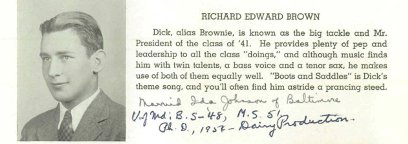
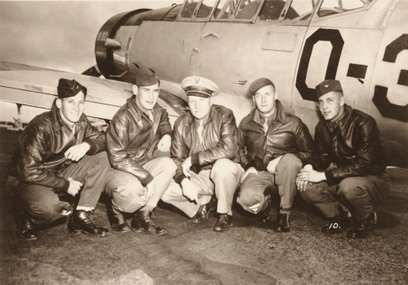

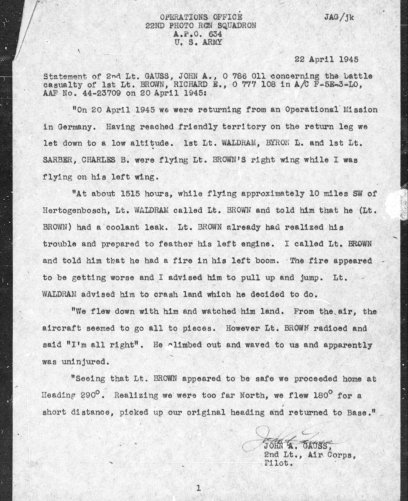
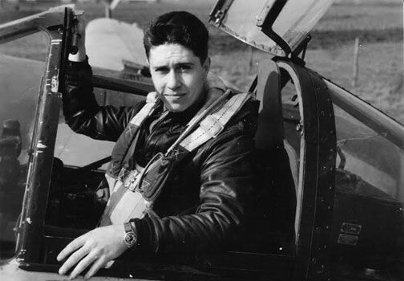
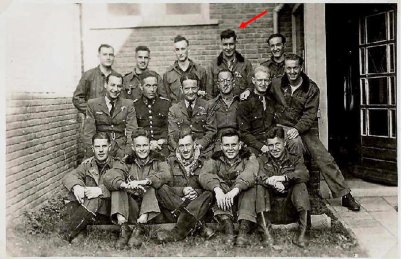
%20-%20scan.jpg)

